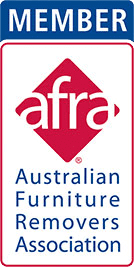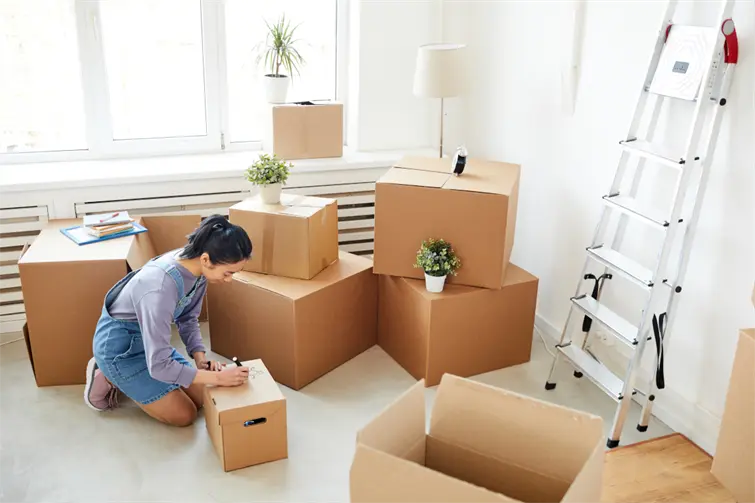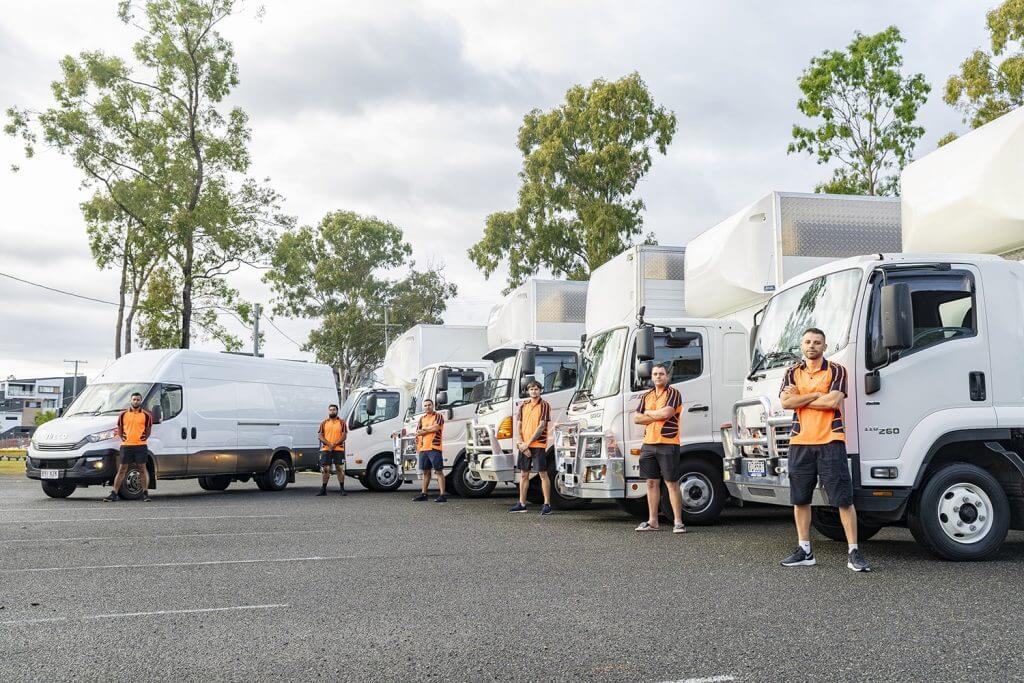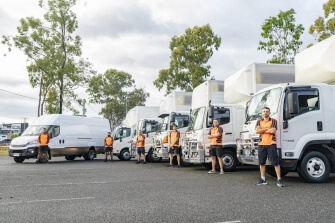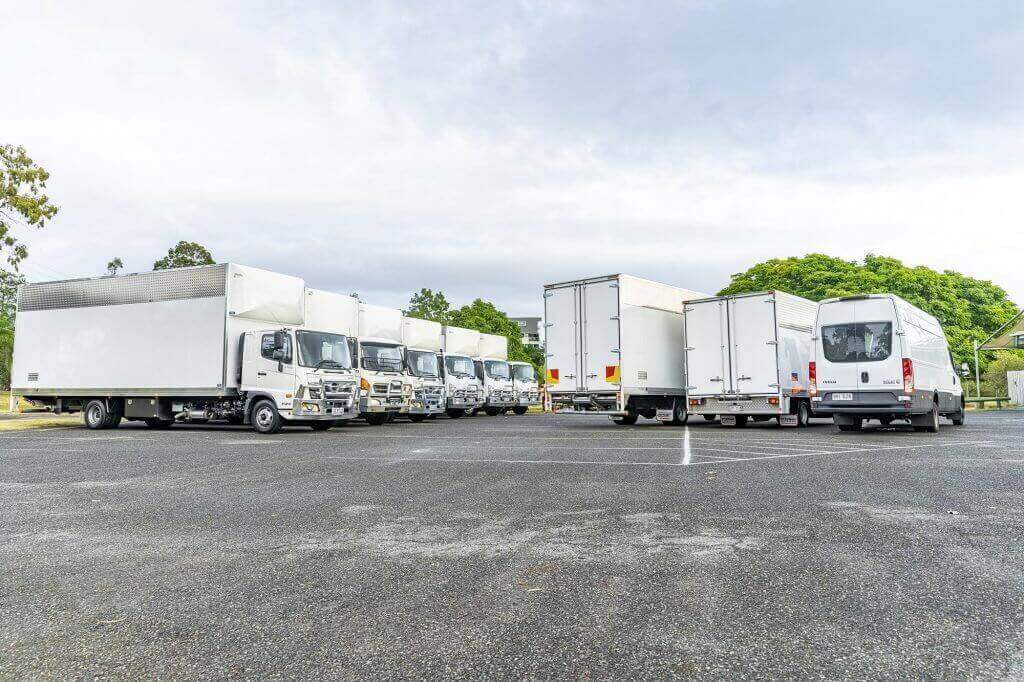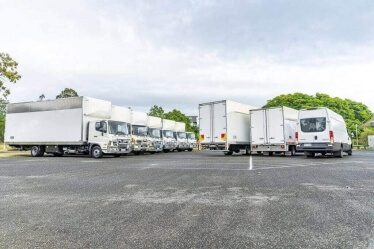15 Ultra-useful Tips When Moving Apartments
Moving to a new apartment can be an exciting adventure but also an overwhelming and stressful experience. Countless details exist between packing, organising, cleaning, and coordinating the move. However, adequate planning and organisation can make your move smooth and successful. This article will provide 15 ultra-useful tips for moving apartments to help you stay on track and avoid common pitfalls.
Plan Ahead
Planning is critical to a smooth and successful move. Starting the moving process early and creating a timeline and checklist will help you stay organised and on track. This will give you ample time to address any issues and adjust your plans accordingly. Make sure you schedule your move with enough time, research your new location, and organise your finances to cover all the expenses. By planning, you can minimise stress and ensure everything runs smoothly on a moving day.
When it comes to moving apartments, one of the most useful tips you can follow is to plan ahead. Planning ahead allows you to stay organized, reduce stress, and ensure a smoother transition. Here’s why this tip is essential and how you can implement it effectively:
Start your planning process as early as possible.
Moving involves numerous tasks, such as packing, notifying utility providers, and finding a moving company if needed. By giving yourself ample time, you can tackle these tasks systematically and avoid last-minute rushes.
Create a detailed moving checklist.
Break down the process into smaller, manageable tasks and set deadlines for each. This will help you stay on track and ensure that nothing falls through the cracks.
Research your new apartment and neighbourhood
Familiarize yourself with the layout of your new space, including measurements and any restrictions on moving hours or elevator usage. Additionally, explore the amenities and services available in the neighbourhood to help you settle in more smoothly.
Get organized with packing supplies.
Stock up on sturdy boxes, packing tape, bubble wrap, and other necessary materials. Start packing non-essential items early, and clearly label each box with its contents and the room it belongs to. This will make unpacking a breeze.
Safeguard Your Documents
Consider creating a moving binder or folder to keep important documents, such as leases, contracts, and moving quotes, in one place. This will help you stay organized and easily access any necessary information throughout the moving process.
Ask for Help
Reach out to friends or family members for assistance or consider hiring professional movers if it fits your budget. Booking their services well in advance can ensure their availability on your preferred moving date.
Declutter Before Packing
Decluttering before packing can save you time, effort, and money during your move. Take the opportunity to go through your belongings and remove items you no longer need or use. This will not only make packing easier, but it will also help you start fresh in your new space. You can donate items to charity, sell them online or have a garage sale. Be sure to set aside items to recycle or dispose of appropriately. Decluttering before packing will make your move more efficient and enjoyable.
When moving apartments, one of the most useful tips you can follow is to declutter before packing. Decluttering not only helps you save time and effort during the moving process but also allows you to start fresh in your new space. Here’s why this tip is important and how you can implement it effectively:
Decluttering helps you get rid of unnecessary items
Take the time to go through each room and assess your belongings. Ask yourself if you really need or use each item. Consider donating or selling things that are in good condition but no longer serve a purpose in your life. This not only reduces the number of items you have to pack and move but can also provide you with some extra cash.
Decluttering also helps you organize and prioritize your belongings
As you sort through your items, create different categories such as “keep,” “donate/sell,” and “throw away.” This allows you to focus on what truly matters to you and streamline your packing process.
Decluttering before packing allows you to save on packing materials
With fewer items to pack, you’ll require fewer boxes, bubble wrap, and packing paper. This can significantly reduce your expenses or free up funds for other moving-related costs.
Decluttering creates a fresh start in your new apartment
Moving is an excellent opportunity to let go of things that no longer serve you and embrace a more minimalist lifestyle. It can also make your new space feel more organized and spacious from the beginning.
Label Boxes Clearly
Labelling boxes is an essential step in the moving process. It involves marking each box with a label that describes its contents. This will help you quickly identify the contents of each box when unpacking at your new home.
When it comes to moving apartments, one of the most useful tips to follow is to label your boxes clearly. Proper labeling helps you stay organized, streamline the unpacking process, and ensure that your belongings end up in the right rooms in your new apartment. Here’s why this tip is essential and how you can implement it effectively:
Your Own Labelling System
Use a labelling system that works for you to label boxes effectively, such as colour coding or numbering. Make sure to include a brief description of the contents of each box, such as “books” or “kitchen supplies.” Be sure to label boxes on the top and at least one side so you can easily see the labels when stacked.
Easily Identify Labelled Boxes
Labeling boxes provides a quick and easy way to identify the contents of each box. As you pack your starter home or first apartment, use a marker or labels to clearly indicate what items are inside. This will save you time and effort when searching for specific items after the cross country move or local move.
Label by Room Destinations
Labeling boxes with the designated room in your new apartment helps movers or friends assisting you to place the boxes in the correct areas. This ensures a smoother unpacking process, as you won’t have to move heavy boxes around to rearrange them later.
Consider using a color-coded system for labeling.
Assign a different color to each room and use colored tape or stickers on the boxes accordingly. This visual cue allows you and your helpers to quickly identify where each box should go, even from a distance.
“Fragile” and “Handle with Care”
For fragile items, make sure to label them as “fragile” or “handle with care” to ensure they receive the necessary attention during the move. This helps prevent accidental damage and breakage. Clearly labelled boxes will also help movers know which packages are fragile or contain valuable items. This will ensure all parcels are correctly handled and reduce the risk of damage during the move. With clear labelling, unpacking and settling into your new home will be much easier and less stressful.
Keep an inventory list of your boxes and their contents.
Number each box and create a corresponding list that details the items inside. This will help you keep track of your belongings, especially if you’re moving long-distance or have a large number of boxes.
Pack an Essentials Box
Packing an essentials box is also a great way to make your move as hassle-free as possible. An essentials box should immediately contain phone chargers, toiletries, snacks, and cleaning supplies. This will ensure you have everything you need when you arrive at your new home and provide peace of mind. Pack this box last and label it so you or your movers can quickly identify it.
When it comes to moving apartments, one of the most useful tips you can follow is to pack an essentials box. An essentials box contains items you’ll need immediately upon arrival at your new place, ensuring convenience and avoiding the hassle of searching through numerous boxes. Here’s why this tip is important and how you can implement it effectively:
It may take some time to unpack and organise everything
Having an essentials box ensures that you have the necessary items readily available without rummaging through multiple boxes. This box should contain essentials such as toiletries, medications, a change of clothes, important documents, and any other items you’ll need within the first few days.
Pack the essentials box last
It’s easily accessible when you arrive at your new apartment. Clearly label it to distinguish it from the other boxes and make sure it’s loaded last onto the moving truck or kept with you during the move.
Consider including basic cleaning supplies, toilet paper and paper towels in the essentials box.
Having paper towels, toilet paper and other cleaning supplies ready makes it easier to clean up small spaces while unpacking. This allows you to quickly clean the new apartment before unpacking, ensuring a fresh and welcoming environment.
Don’t forget to pack some snacks, water, and basic kitchen utensils in the essentials box.
After a long day of moving, having easy access to refreshments and a means to prepare a simple meal can be a relief.
Keep Valuables in a Box
Keep valuable items such as jewelry, important documents, and electronic devices in the essentials box. This ensures their safety and gives you peace of mind during the move.
Take Measurements Before Moving In
When it comes to moving apartments, one of the most useful tips you can follow is to take measurements before moving in. Taking accurate measurements of your new space ensures that your furniture and belongings fit properly and saves you the hassle of dealing with unexpected surprises. Here’s why this tip is crucial and how you can implement it effectively:
To take measurements effectively, start with larger items such as sofas, beds, and tables. Measure each item’s length, width, and height, and compare these measurements to the measurements of the rooms in your new home. This will help you determine if each item will fit comfortably in the room or if you need to make some adjustments or leave certain things behind.
Measure and Plan the Furniture pieces
Measuring your apartment allows you to plan the layout and arrangement of your furniture in advance. By knowing the dimensions of each room, you can determine where your larger pieces of furniture will fit and how to optimize the space. This prevents the need for last-minute rearrangements or the disappointment of realizing that certain items don’t fit.
Measure Doorways and Staircases
Measure doorways, hallways, and staircases to ensure that your furniture can be easily maneuvered into the apartment. This is especially important for bulky or oversized items that may require disassembly or special handling.
Check the Electrical Outlets
Consider the placement of electrical outlets, heating/cooling vents, and cable/internet access points. Knowing their locations helps you plan the positioning of electronics, entertainment centers, and other equipment in the most practical and functional way.
Measure Closets and Cabinets
Take measurements of closets, storage spaces, and cabinets to determine how you’ll utilize the available storage in your new apartment. This allows you to plan for additional storage solutions if needed.
Be Precise, Measure Properly
When taking measurements, be precise and record them accurately. Use a tape measure and note down the dimensions for reference during the move and when arranging your belongings in your new space.
Notify Utilities and Change Address
Be sure to notify all utility providers and institutions of your move. Contact your service providers at least two weeks before your move-out date to notify utilities. This includes electricity, gas, water, internet, and cable or satellite TV. Let them know your move-out date and your new address, so they can disconnect services at your old home and set them up at your new one. Remember to settle any outstanding bills before leaving your old home.
To change your address, you can do so online or by visiting your local post office. The USPS offers a free online change of address service that will forward your mail to your new address for up to a year. You should also update your address with important entities such as your bank, credit card companies, insurance providers, and other subscriptions or memberships.
When it comes to moving apartments, one of the most useful tips you can follow is to notify utilities and change your address promptly. Taking care of these essential tasks ensures a smooth transition and avoids any disruptions to your services. Here’s why this tip is important and how you can implement it effectively:
Notify the Utilities
Notify your utility providers well in advance of your move. Contact electricity, gas, water, internet, cable, and any other relevant service providers to schedule disconnections at your old apartment and connections at your new place. This ensures that you have uninterrupted access to essential services in your new home.
Update Your Address
Update your address with the post office to ensure that your mail is redirected to your new address. Submit a change of address form or update your address online to avoid missing any important documents or packages.
Inform your Financial Services
Inform your bank, credit card companies, insurance providers, and other important contacts about your change of address. This ensures that you continue receiving important correspondence and that your financial and insurance records are up to date.
Notify Other Organisations
Consider creating a list of all the organizations, subscriptions, and memberships that need to be informed about your address change. This may include your employer, schools, healthcare providers, subscription services, and more. Take the time to update your address with each of them to avoid any miscommunications or delivery issues.
If you’re moving to a new area, research and find new service providers in your new neighborhood. Compare options and set up new accounts or services as needed.
Pack Heavy Items in Small Boxes
Packing heavy items in smaller boxes makes them easier to move and minimises the risk of injury. Be mindful of weight limits when packing, and distribute heavy items evenly among boxes.
To pack heavy items in small boxes effectively, start by selecting smaller boxes that can handle the weight of your items. Items such as books, kitchen appliances, and tools are typically heavy and should be packed in small boxes to reduce weight.
When it comes to moving apartments, one of the most useful tips you can follow is to pack heavy items in small boxes. Properly packing your belongings not only ensures their safety during the move but also makes the process more manageable and efficient. Here’s why this tip is important and how you can implement it effectively:
Pack to Distribute the Heavy Weight
Firstly, packing heavy items in small boxes helps prevent them from becoming too heavy to lift or carry. By distributing the weight evenly, you reduce the risk of strain or injury while handling the boxes. It also makes it easier to maneuver the boxes through doorways, staircases, and narrow hallways.
Minimise Breakage
Using small boxes for heavy items also minimizes the chances of boxes breaking or collapsing during transit. Large boxes filled with heavy items can become unstable, leading to damage to your belongings or making them more difficult to move.
Use Special Boxes for Heavy Objects
Consider using sturdy boxes specifically designed for heavy items or reinforcing the boxes with additional packing materials to ensure their durability.
Label with “Heavy”
Label the boxes clearly as “Heavy” or “Fragile” to alert yourself and others handling them. This helps prioritize their handling and ensures that they are placed at the bottom when stacking boxes.
Protect with Packing Tape, Bubble Wrap and Packaging Paper
When packing you rbelongings, wrap individual heavy items in protective materials such as bubble wrap or packing paper to prevent them from shifting or getting damaged during the move. Use proper protective materials such as bubble wrap or packing paper to secure your items when packing.
Fill empty spaces in the box with packing material to prevent items from shifting during transit. Be sure to label each box with its contents and note that it contains heavy items.
Place the Heavy Boxes at the Bottom
Strategically place smaller boxes containing heavy items on the bottom when loading them into the moving truck. This provides a stable base for stacking other boxes and prevents them from toppling over.
Protect Fragile Items
Fragile items should be handled with extra care during the moving process. Use proper packing materials such as bubble wrap or packing paper to protect these items and prevent breakage. Wrap each item individually and place it in a slightly larger box than the item itself. Fill any empty spaces with packing material to secure the items in place.
When it comes to moving apartments, one of the most useful tips you can follow is to protect fragile items. Fragile items such as glassware, ceramics, electronics, and sentimental objects require special attention to ensure they arrive at your new home intact. Here’s why this tip is crucial and how you can implement it effectively:
Before packing fragile items, gather the necessary packing supplies.
This may include bubble wrap, packing paper, foam peanuts, sturdy boxes, and tape. These materials provide a protective layer and cushioning to prevent damage during the move.
Wrap each fragile item individually with bubble wrap or packing paper.
This creates a barrier that absorbs shocks and prevents items from colliding with each other. Pay extra attention to delicate edges and handles by providing additional layers of protection.
Fragile Items go to Proper Sized Boxes
Place fragile items in appropriately sized boxes, ensuring there is minimal space for movement. Fill any empty gaps with packing peanuts or crumpled paper to provide additional cushioning and prevent shifting during transit.
Label boxes containing fragile items with a “fragile” label, and note the box’s contents. This will help ensure that your movers know which boxes need extra care and handling when packing and unpacking.
Consider Moving Valuable Items Separately
Consider transporting highly fragile or valuable items, such as artwork or antiques, separately or by hand if possible. This allows for maximum control and reduces the risk of accidents during the move.
Use Clear Plastic Bins
Clear plastic bins are a great way to organise your belongings or packing clothes during the move. Clear containers make identifying and locating items easier, and you can stack them securely on a moving truck or in storage. Be sure to label each bin with its contents for easy identification when unpacking. When selecting bins, be sure to choose sturdy and durable ones so they can survive the move.
When it comes to moving apartments, one of the most useful tips you can follow is to use clear plastic bins. Clear plastic bins offer numerous advantages over traditional cardboard boxes, making them an excellent choice for your move.
Here’s why this tip is important and how you can implement it effectively:
You Can See the Contents with Clear Plastic Bins
Clear plastic bins allow you to see the contents of each box without having to open them. This makes it easier to locate specific items quickly, especially when you’re in a hurry or unpacking in stages. You won’t have to rummage through multiple boxes to find what you need, saving you time and effort.
It Provides Protection
Using clear plastic bins also provides better protection for your belongings. Unlike cardboard boxes that can get crushed or damaged, plastic bins are more durable and resistant to impact. They offer better protection against moisture, dust, and pests, ensuring that your items stay safe and in good condition.
They are Reusable
Additionally, clear plastic bins are reusable. After your move, you can repurpose them for storage at your new address or for future moves. This eliminates the need to purchase new boxes or plenty of garbage bags for storage purposes and reduce waste.
Consider Grouping Things in Clear Plastic Bins
When packing with clear plastic bins, consider grouping similar items together and labelling the bins accordingly. This further enhances organisation and makes unpacking and setting up your new home or studio apartment more efficient.
Choices in Size and Shapes
Clear plastic bins also come in various sizes and shapes, allowing you to choose the ones that best fit your needs. Opt for stackable bins to maximise space utilisation in the moving truck and your new apartment.
Take Inventory of Your Belongings
Inventorying your belongings is also an important step in the moving process. To take inventory effectively, list all the items you’ll be moving. This includes furniture, electronics, appliances, and any other belongings you have. Be sure to note the condition of each item and whether it requires special handling during transportation.
Take Photos
Take photos or videos of valuable items such as antiques, jewellery, and artwork. This will prove their condition before the move for insurance purposes.
Label Each Box with its Contents
Label each box with its contents and indicate which room it belongs in. This will help you stay organised during the move and make unpacking easier. You can also colour-code all the boxes by room to make it even easier to identify where everything should go.
Pack an Overnight Bag
Packing an overnight bag is a must when moving. This bag should contain items you will need on your first night in your new home. This can include toiletries, medications, change of clothes, and other essential items during the transition. Packing this bag ahead of time can make your move much smoother and more stress-free. You can bring a change of clothing to quickly change if needed. Hanging clothes to dry can also help to keep your own stuff tidy while unpacking.
When it comes to moving apartments, one of the most useful tips you can follow is to pack an overnight bag. Moving can be exhausting, and having an overnight bag readily available ensures that you have essential items at your fingertips, without the need to unpack everything immediately. Here’s why this tip is important and how you can implement it effectively:
Immediate Access to Necessary Items
Packing an overnight bag allows you to have immediate access to necessary items for the first night in your new apartment. Consider including toiletries, a change of clothes, pajamas, medications, chargers, and any other items you’ll need to feel comfortable and refreshed.
No Need to Rummage Through Multiple Boxes for Essentials
By having an overnight bag, you can avoid rummaging through multiple boxes to find essential items when you arrive at your new place. This saves you time and energy, allowing you to relax and settle in after a long day of moving.
Pack Your Essentials
Think about including some basic kitchen essentials in your overnight bag. Items like a small set of utensils, a couple of plates, cups, and some non-perishable snacks can come in handy until you have a chance to unpack and organize your kitchen.
Include Important Documents
Remember to pack any important documents or valuables in your overnight bag to keep them safe and easily accessible.
Pack for your Pets
If you have pets, include necessary items such as food, water bowls, a leash, and toys in y
Protect Your Floors and Walls
When it comes to moving apartments, one of the most useful tips you can follow is to protect your floors and walls. Taking steps to safeguard your new and old apartment’s surfaces helps prevent damage and ensures a smooth move-in and move-out process.
During the move, you should use protective materials such as blankets or cardboard to protect your floors and walls. Use these materials to cover doorways, stairwells, floors, and furniture that might be at risk of damage during the move. This will help reduce the risk of dents or scratches on your furniture or walls.
Here’s why this tip is important and how you can implement it effectively:
Use Furniture Sliders and Moving Blankets
Protecting your floors is essential to avoid scratches, scuffs, and other damage caused by moving heavy furniture and boxes. Consider using furniture sliders or moving blankets to minimize friction and provide a smooth surface for items to slide across. Place protective mats or rugs in high-traffic areas to absorb any dirt or debris brought in during the move.
Use Furniture Pads
Similarly, protecting your walls is crucial to prevent dents, marks, and holes. Use furniture pads or corner guards to cushion the impact of large items against the walls. Wrap sharp edges or protruding parts of furniture with padding or bubble wrap to prevent accidental damage.
Use Cardboard and Foam Sheets
Consider using cardboard or foam sheets to create a pathway along the floors, especially in areas where there is heavy foot traffic. This helps protect the flooring from damage caused by constant walking or dragging of heavy items.
Be Careful of Corners
When moving large furniture, be mindful of the angles and corners to avoid hitting or scraping the walls. Take your time and, if necessary, disassemble furniture to make the process easier and safer.
Check your Lease Agreement
If you’re renting, check your lease agreement for any specific requirements or recommendations regarding floor and wall protection. Some landlords may provide guidelines or even require certain measures to be taken during the move.
Unpack in Stages
When unpacking, it is important to do so in stages. Start with the essentials and work your way through each room of the house.
- Begin by unloading the furniture and large items first before unpacking the boxes. Then focus on areas such as the kitchen or bedroom you need immediately.
- Next, start unpacking smaller items such as dishes, books, and other items that do not require immediate attention.
- Finally, unpack decorative items such as artwork or knickknacks to finish off the room. This will help make unpacking much easier and more organised.
Take Photos of Electronics
Before you unplug and pack any electronics, take pictures of the back of them. To take photos of electronics effectively, start by taking photos of the front and back of each device. This includes TVs, computers, gaming consoles, and any other electronic devices you have. Take close-up shots of the ports and cables so you know where they are plugged in when you set them up again.
When it comes to moving apartments, one of the most useful tips you can follow is to take photos of your electronics. Capturing visual documentation of your electronics before the move can be extremely beneficial for several reasons.
Labelling the cables and cords with tape or stickers is also a good idea so that you know which device they belong to. This will save you time and effort when setting up your electronics in your new home.
Here’s why this tip is important and how you can implement it effectively:
Pictures as Visual Inventory
Firstly, taking photos of your electronics serves as a visual inventory. By photographing each item, you have a record of its condition prior to the move. This can be useful in case of any damage that may occur during transportation or when setting up your new apartment. It helps you identify any pre-existing issues and provides evidence for insurance claims, if necessary.
Easier to Remember Wiring and Setup of Electronics
Photographs also help you remember the wiring and setup of your electronics. Cables, cords, and connections can easily become tangled or misplaced during the move. By having visual references, you can easily recreate the proper setup in your new apartment without confusion or frustration.
Helps With Troubleshooting
In addition, taking photos of your electronics assists with troubleshooting. If any technical issues arise after the move, you can refer back to the photos to ensure that everything is connected correctly and nothing was inadvertently damaged during the process.
Take Pictures of the Serial Numbers
Remember to take close-up shots of any serial numbers or identifying labels on your electronics. This information can be valuable for warranty purposes or in case of loss or theft.
Store in a Safe Place
Store the photos in a safe place, either on a cloud storage service or on a separate hard drive, to ensure they are easily accessible when needed.
Hire a Professional Moving Company
Hiring professional movers can save you time and energy, as they will be able to do all the hard work for you. When it comes to moving apartments, one of the most useful tips you can follow is to hire a professional moving company. In selecting a moving company, research their reputation and get references before hiring them. Professional movers can also provide tips and advice on how to pack your belongings safely and efficiently.
While moving on your own may seem cost-effective at first, the expertise and efficiency offered by professionals can save you time, effort, and even money in the long run.
Here’s why this tip is important and how you can implement it effectively:
Experience and Knowledge
Professional moving companies have the experience and knowledge to handle the entire moving process efficiently. They are well-versed in packing, loading, and transporting belongings, ensuring that your items are handled with care and reach your new apartment safely.
Lifting Heavy Furnitre and Boxes
By hiring professionals, you can save yourself the physical strain and stress of lifting heavy furniture and boxes. Movers are equipped with the necessary tools and equipment to handle large or fragile items, reducing the risk of damage and potential injuries.
Packing and Unpacking
Professional movers can also provide additional services such as packing and unpacking, furniture assembly, and storage solutions. This allows you to customize your moving experience based on your needs and budget.
More Cost-Effective
Furthermore, hiring a moving company can be more cost-effective than attempting a DIY move. When you consider the expenses involved in renting a moving truck, purchasing packing supplies, and potentially damaging your belongings, the cost of professional movers can often be justified.
Choose Wisely
Research and choose a reputable moving company by reading reviews, obtaining multiple quotes, and checking their licensing and insurance information. This ensures that you are entrusting your belongings to reliable and trustworthy professionals.
Conclusion
Moving to a new home can be a stressful process, but with proper planning and preparation, it doesn’t have to be. To make a move easier, hiring professional movers such as OptiMove can help take the burden off your shoulders. They provide a full range of services, from packing and moving to unpacking and setting up your new home. With their help, you can rest assured that your move will be as smooth and stress-free as possible.
Moving apartments can be a daunting task, but with the right tips and strategies, you can navigate the process smoothly and efficiently. By following the useful tips outlined in this guide, you can save time, money, and energy during your move and ensure a successful transition to your new apartment.
Planning ahead is crucial for a seamless move. Create a checklist, set a budget, and establish a timeline to stay organized and on track. Decluttering before packing helps lighten your load and reduces unnecessary items that need to be moved. Labeling boxes clearly and packing an essentials box make unpacking and settling into your new apartment much easier.
Taking measurements before moving in ensures that your furniture and belongings fit properly in your new space, avoiding any surprises. Notifying utilities and changing your address in advance helps avoid disruptions and ensures you have essential services in place. Packing heavy items in small boxes makes them easier to handle and prevents boxes from becoming too heavy.
Protecting fragile items, using clear plastic bins, and hiring a professional moving company are all strategies that contribute to a smoother and safer move. Additionally, taking photos of electronics and protecting your floors and walls help safeguard your belongings and maintain the integrity of both your old and new apartments.
By incorporating these useful tips into your moving plans, you can reduce stress, save money, and make the entire process more manageable. Remember to stay organised, take precautions to protect your belongings, and enlist the help of professionals when needed. With proper preparation and execution, your apartment move can be a positive and rewarding experience.


